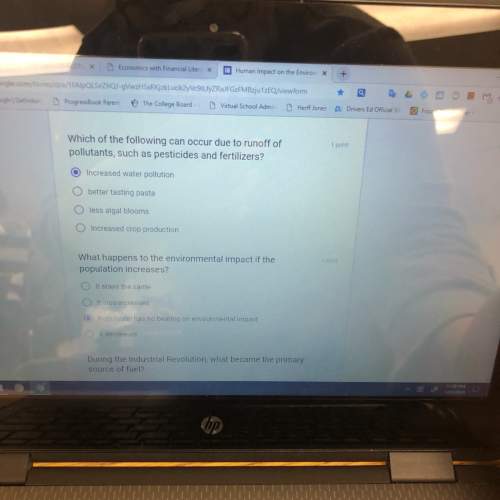
Biology, 11.12.2020 07:10 JojoSiwa901
1. a series of processes that take place within a cell in which biochemical energy from organic substances (ex. glucose) is converted into high energy molecules called ATP for use in energy-requiring activities of the cell?
A. photosynthesis
B. cellular respiration
V. enzyme
D. chloroplast
2. a protein that catalyzes (speeds up) a reaction without being changed by the?
A. reaction
B. substrate
C. enzyme
D. photosynthes cellular respiration
3 a process in which complex organic molecules are synthesized (created) using carbon dioxide, water, and light energy capture by chlorophyll?
A cellular respiration
B chloroplast
C mitochondria
Dphotosynthesis
4 a chemical or set of chemicals that are affected by enzymes?
enzyme
substrate
chloroplast
mitochondria
5 found in plant cells; produces energy through photosynthesis; convert light energy to energy stored in the form of sugar?
mitochondria
chloroplast
enzyme
none of the above
6 power house of the cell; responsible for cellular respiration and production of (most) ATP in the cell?
chloroplast
enzyme
mitochondria
none of the above
7 Response area stands for adenosine triphosphate, and is the energy used by an organism in its daily operations.?
ATP OR ADP
8 is a monosaccharide; Its general chemical formula is C6H12O6.
9 Response area without oxygen; this method of cellular respiration does not require oxygen to generate energy.? AEROBIC OR ANAEROBIC
10 it is the process of cellular respiration in the presence of oxygen.
anaerobic
aerobic
catalyst
enzyme
11 The electron transport chain is a group of compounds that pass an electron from one to another coupled with the transfer of proton across a membrane to create a proton gradient that drives ATP synthesis/creation.
True
False
12 is the green pigment found in the chloroplasts of higher plants, which is primarily involved in absorbing light energy for photosynthesis.
13 A catalyst is a substance capable of initiating or speeding up a chemical reaction.
True
False
14 The specific region of an enzyme where a substrate binds and catalysis takes place or where chemical reaction occurs?
15 Activation energy is the energy that a system must have before a chemical reaction can occur.?
True
False
I NEED HELP ASAP I YOU GET THAM ALL RIGHT ILL GIVE YOU BRIANLIEST!!

Answers: 2


Other questions on the subject: Biology


Biology, 22.06.2019 04:30, emilysambrano2
This part insulates the reaction chamber from the transfer of heat to or from the surrounding environment
Answers: 1

Biology, 22.06.2019 19:30, angellynn50
You are studying a protein that you call protein x. there is an aspartic acid at a key position in protein x which is important in the folding and stabilization of that protein. if this aspartic acid is changed to a different amino acid, which type of amino acid substitutions is most likely to allow the protein to fold normally?
Answers: 2
You know the right answer?
1. a series of processes that take place within a cell in which biochemical energy from organic subs...
Questions in other subjects:





World Languages, 03.12.2020 01:00


Chemistry, 03.12.2020 01:00

Mathematics, 03.12.2020 01:00

Mathematics, 03.12.2020 01:00




